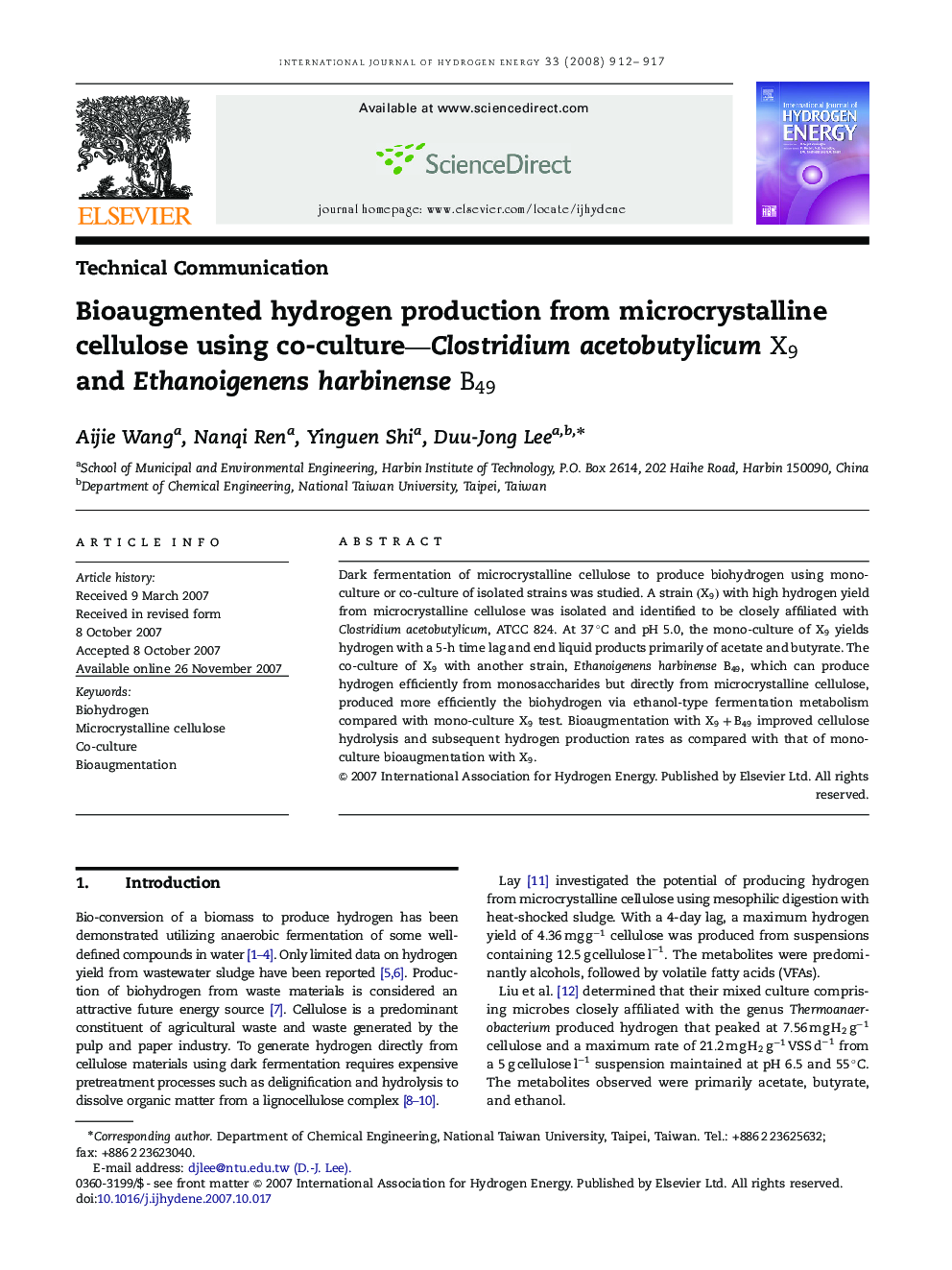| Article ID | Journal | Published Year | Pages | File Type |
|---|---|---|---|---|
| 1280022 | International Journal of Hydrogen Energy | 2008 | 6 Pages |
Dark fermentation of microcrystalline cellulose to produce biohydrogen using mono-culture or co-culture of isolated strains was studied. A strain (X9)(X9) with high hydrogen yield from microcrystalline cellulose was isolated and identified to be closely affiliated with Clostridium acetobutylicum , ATCC 824. At 37∘C and pH 5.0, the mono-culture of X9X9 yields hydrogen with a 5-h time lag and end liquid products primarily of acetate and butyrate. The co-culture of X9X9 with another strain, Ethanoigenens harbinense B49B49, which can produce hydrogen efficiently from monosaccharides but directly from microcrystalline cellulose, produced more efficiently the biohydrogen via ethanol-type fermentation metabolism compared with mono-culture X9X9 test. Bioaugmentation with X9+B49X9+B49 improved cellulose hydrolysis and subsequent hydrogen production rates as compared with that of mono-culture bioaugmentation with X9X9.
